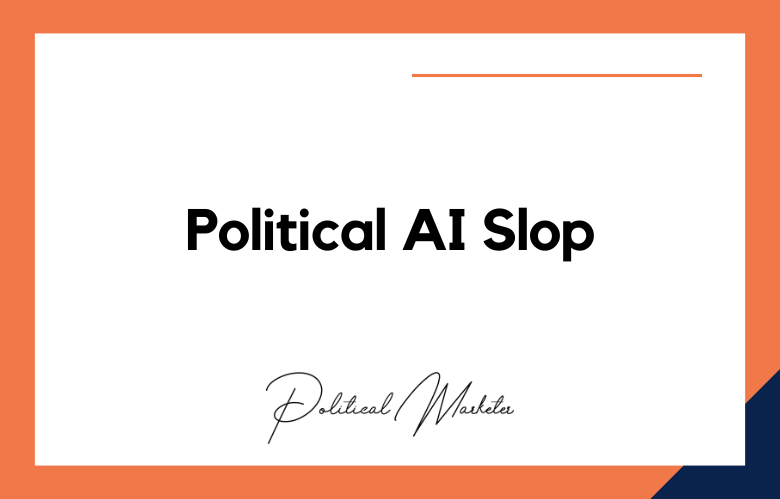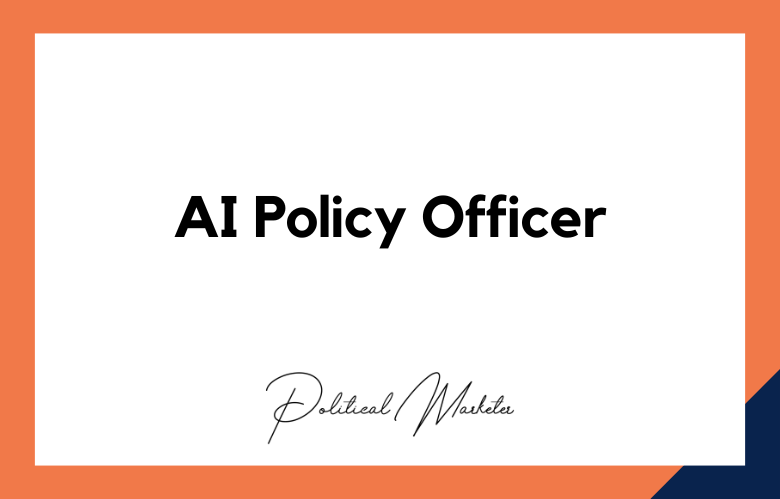Transfer learning revolutionizes political campaigns by applying pre-trained machine learning models to new, campaign-specific tasks with minimal adaptation. This approach allows campaigns to leverage existing models developed for similar problems, significantly reducing the time and resources required for model training from scratch.
Transfer learning offers a strategic advantage in political campaigns, where timely and accurate insights into voter behavior, sentiment, and preferences are crucial.
Models Transfer Learning for Political Campaigns: Benefits & Strategies
For example, a model initially trained to analyze consumer sentiment in commercial sectors can be fine-tuned to assess voter sentiment toward specific political issues or candidates.
Similarly, models developed for demographic segmentation in marketing can be adapted to identify key voter segments and their likely voting behavior. This accelerates the deployment of advanced analytics in campaign strategies and enhances the precision and relevance of the insights generated.
However, applying transfer learning to political campaigns also necessitates careful consideration of the differences between the original training context and the new political context. Ensuring the models’ adaptability and sensitivity to the nuances of political data is crucial to avoid inaccuracies or biases that could misinform campaign strategies.
In essence, transfer learning represents a powerful tool for political campaigns, enabling them to harness cutting-edge machine learning capabilities more efficiently and effectively. It underscores the growing intersection between technology and politics, where innovative data science approaches are increasingly employed to engage voters and shape electoral outcomes responsibly and effectively.
- Key Takeaways
- Transfer Learning in Political Campaigns
- Benefits of Transfer Learning
- Successful Models in Politics
- Data Preprocessing for Political Analysis
- Choosing the Right Transfer Learning Model
- Evaluating Model Performance
- Implementing Transfer Learning Strategies
- Best Practices for Political Campaigns
- Future of Transfer Learning in Politics
- Summary
- Frequently Asked Questions
- What is transfer learning in the context of political campaigns?
- How can transfer learning benefit political campaigns?
- What are some successful models used in politics with transfer learning?
- Why is data preprocessing crucial for political analysis using transfer learning?
- How can one choose a suitable transfer learning model for a political campaign?
Delving into political campaigns and elections and understanding how model transfer learning can revolutionize strategies is crucial for insights into voter behavior and data analysis. By leveraging the powerful tool of transfer learning in elections, political campaigns can adapt and evolve swiftly, contrasting traditional methods with dynamic efficiency. This innovative approach enables campaigns to harness existing knowledge, insights, and research and apply it effectively in new contexts, enhancing decision-making processes and optimizing outcomes. Stay tuned as we research and explore the impact, benefits, and future of incorporating transfer learning models into political campaign strategies.
Key Takeaways
- Utilize Transfer Learning: Apply transfer learning techniques in political campaigns to leverage pre-trained models and improve efficiency.
- Select Appropriate Models: To enhance campaign strategies, choose transfer learning models suitable for political analysis, such as sentiment analysis or topic classification.
- Optimize Data Processing: Prioritize data preprocessing for accurate political insights, ensuring data quality and relevance in model training.
- Evaluate Model Effectiveness: Regularly assess model performance using metrics like accuracy and precision to fine-tune strategies and make informed decisions.
- Implement Best Practices: For campaign success, incorporate best practices like continuous monitoring, model retraining, and adapting to dynamic political landscapes.
- Embrace Innovation: Embrace the evolving landscape of transfer learning in politics to stay ahead of the curve and drive impactful campaign outcomes.
Transfer Learning in Political Campaigns
Application
Transfer learning in political campaigns involves leveraging pre-trained models on generic data, training them with specific political data, and fine-tuning them for elections. This approach enhances the efficiency of campaign strategies.
Transfer learning can be applied to predict voter behavior based on past voting patterns, demographics, and social media interactions in elections. By utilizing existing machine learning methods and trained analysts on vast amounts of general data, campaigns can adapt these models to analyze specific variables unique to political contexts and uncover trends and insights.
Impact
Implementing transfer learning in political campaigns revolutionizes how parties understand voter sentiments through training and data analysis, tailoring their messages accordingly. By incorporating machine learning methods, campaigns can make informed decisions based on data-driven insights rather than intuition alone.
This method, a powerful tool, enables campaigns to optimize resource allocation by targeting key demographics more effectively, using clustering for insights. The ability to customize models for specific tasks within a campaign in the political landscape allows for more accurate predictions, insights, and personalized engagement with voters and relationships.
Examples
- Obama Campaign: During the Obama presidential campaign, transfer learning was used to analyze social media data to identify trending topics and sentiment analysis.
- Brexit Referendum: In the Brexit referendum, transfer learning helped predict voting patterns by analyzing historical voting trends and demographic information.
Benefits of Transfer Learning
Enhanced Efficiency
Transfer learning in political campaign modeling offers significant advantages. By leveraging pre-trained models, the process becomes more efficient. It allows for the reuse of knowledge, insights, patterns, and features extracted from one dataset to another. This results in faster model training and reduced computational resources.
Improved Predictive Performance
Utilizing transfer learning can substantially enhance predictive performance for political events. By fine-tuning a model trained on a large dataset to a smaller, specific political dataset, the model can better generalize patterns and make accurate predictions. This approach minimizes overfitting and improves the model’s ability to adapt to new data.
Adaptability and Generalization
One key benefit of transfer learning is its ability to enhance the adaptability, generalization, and understanding of political campaign models through data analysis. With transfer learning, models can learn intricate patterns from diverse datasets, enabling them to make informed decisions based on varying political contexts. This adaptability is crucial in predicting outcomes accurately across different campaigns and scenarios.
Cost-Effective Solution
Implementing transfer learning techniques in political data analysis offers a cost-effective solution. Instead of starting from scratch with each new campaign dataset, transfer learning allows for utilizing existing knowledge and features. This reduces the time and resources required for model development, making it an efficient choice for political campaigns with limited budgets.
Successful Models in Politics
Specific Models
Political scientists have developed multiple models which have proven effective in analyzing political data. These models encompass various aspects of the political world, from understanding voter behavior to predicting election outcomes through data analysis. By leveraging these models as a tool for data analysis, experts can gain valuable insights into the complex dynamics of the political landscape.
One such model is sentiment analysis, a tool to gauge public opinion. This technique involves data analysis, analyzing social media trends, news articles, and other sources using a tool to understand how people perceive different political entities. Researchers can uncover hidden patterns and sentiments influencing decision-making processes by applying this model.
Case Studies
In recent years, there have been notable case studies where transfer learning models have reshaped how political data is analyzed—for instance, a project utilized transfer learning for data analysis to analyze images associated with political campaigns. By training a model on diverse images, researchers could identify patterns and relationships that provided valuable insights into voter preferences.
Another example is the application of transfer learning in predicting election outcomes using political data analysis. By transferring knowledge from one domain to another, these models can adapt to changing scenarios and provide more accurate predictions. This approach has revolutionized how political scientists approach data analysis, forecasting, and decision-making in the ever-evolving realm of politics.
Impact on Decision-Making
The impact of successful models on political decision-making processes cannot be overstated. By harnessing the power of advanced analytics and machine learning, policymakers can make informed decisions based on data-driven insights rather than intuition alone. These models enable politicians to tailor their campaigns to resonate with specific demographics and anticipate potential challenges through political data analysis.
Moreover, by incorporating transfer learning techniques into existing models, researchers can enhance the accuracy and reliability of their predictions. This benefits individual campaigns and contributes to a deeper understanding of broader political systems and dynamics through data analysis. As a result, stakeholders across the political spectrum can leverage these tools, including data analysis, to navigate the complexities of modern politics more effectively.
Data Preprocessing for Political Analysis
Importance
Political data analysis heavily relies on data preprocessing to ensure accurate insights and predictions. Cleaning and organizing political data is crucial for model accuracy.
Data preprocessing helps political data scientists extract valuable information from complex data sets. It involves handling missing values, removing duplicates, and standardizing formats.
Challenges
One common challenge in preprocessing political data is dealing with text data. Analyzing articles or social media posts requires techniques like clustering to group similar texts together.
Another challenge is the sheer volume of data points available for analysis. Political analysts often struggle to identify relevant features and reduce noise in the dataset.
Tips for Effective Preprocessing
Thoroughly clean the dataset to effectively preprocess political data for transfer learning models. Remove irrelevant columns and rows to focus on critical variables.
Utilize techniques like tokenization to break down text data into smaller units for analysis. This step is crucial for extracting meaningful insights from textual information.
Consider using dimensionality reduction methods like PCA to reduce the number of features while preserving important information. This can improve model performance and efficiency.
Lastly, validate your preprocessing steps by checking for inconsistencies or errors before feeding the data into transfer learning models.
Choosing the Right Transfer Learning Model
Comparison:
When selecting a transfer learning model for political campaign analysis, consider comparing various options like VGG16, ResNet, and BERT. Each model has distinct strengths and weaknesses. For instance, VGG16 is efficient for image recognition tasks, while BERT excels in natural language processing.
Factors to Consider:
Factors such as the size of the dataset, computational resources, and the complexity of the political data play a crucial role in determining the most suitable transfer learning model. It’s essential to assess whether the model can handle the nuances of political sentiments and trends effectively through data analysis.
Guidelines:
To choose the most appropriate transfer learning model for political campaigns, start by evaluating the specific requirements of your analysis. Consider factors like accuracy, speed, and interpretability. Next, experiment with different models using small subsets of data before committing to one.
Evaluating Model Performance
Key Metrics
When evaluating the performance of transfer learning models for political campaigns, various metrics, and data analysis must be considered. These metrics include accuracy, precision, recall, and F1 score. Accuracy measures the proportion of correctly classified instances, while precision focuses on the number of accurate optimistic predictions among all optimistic predictions. On the other hand, recall calculates the number of accurate optimistic predictions among all actual positives, and the F1 score balances precision and recall.
Data Analysis Techniques
Analysts often employ different variables and data analysis to ensure accurate results in political campaign modeling and test the model’s robustness. By introducing variations in data such as demographics, geographical factors, and socioeconomic indicators, analysts can assess how well the model performs under diverse conditions. This approach helps identify potential biases and improve the model’s adaptability to complex real-world scenarios.
Interpreting Results
Interpreting the outcomes of transfer learning models in politics requires a deep understanding of complexities within political datasets. Analysts need to scrutinize the numerical results and the contextual implications of these findings. Analysts can draw meaningful insights that guide strategic decision-making for political campaigns by examining patterns, trends, and anomalies in the data.
Pros and Cons
- Pros:
- Enhanced predictive capabilities.
- Improved efficiency in campaign planning.
- Better targeting of voter segments.
- Cons:
- Potential biases in training data.
- Challenges in generalizing across different political contexts.
Implementing Transfer Learning Strategies
Data Preparation
Preparing the data is the first step in implementing transfer learning for political campaigns. This involves selecting relevant datasets and ensuring they are cleaned and labeled appropriately.
Model Fine-Tuning
Next, model fine-tuning will be proceeded by adjusting machine learning methods to suit the specific requirements of political campaign data. This step involves modifying existing layers to adapt them to the new dataset.
Integration into Workflows
Aligning transfer learning approaches with existing processes is crucial to ensuring seamless integration into political data analysis workflows. This includes effectively incorporating the updated models into decision-making pipelines.
Challenges and Solutions
One common challenge faced when implementing transfer learning in politics is the availability of labeled data, especially in niche areas. To overcome this, leveraging techniques like semi-supervised learning can help make the most of limited labeled datasets.
Another challenge is domain adaptation, where the target domain differs significantly from the source domain. Employing strategies such as adversarial training can help mitigate domain shift issues and improve model performance.
Best Practices
A key best practice for successful transfer learning in political campaigns is to evaluate model performance regularly. By continuously monitoring how well the adapted models are performing, adjustments can be made promptly to enhance outcomes.
Moreover, it is essential to select pre-trained models carefully, considering factors like similarity between source and target domains. Choosing a pre-trained model that aligns closely with the analyzed political data can significantly boost efficiency.
Incorporating feedback loops into the transfer learning process also proves beneficial. By iteratively refining models based on new information, campaigns can stay adaptive and responsive to evolving trends and dynamics.
Best Practices for Political Campaigns
Ethical Considerations
Political campaigns must uphold ethical standards when using transfer learning for data analysis to analyze voter behavior and preferences. It is crucial to ensure that data collection methods are transparent and respectful of privacy.
Maintaining data integrity is paramount in political processes to prevent any misuse or manipulation of information. By implementing strict data protection protocols, campaigns can build trust with the public.
Optimization Strategies
Continuously updating models with the latest data enhances the effectiveness of transfer learning in political campaigns. This ensures that predictions remain accurate and reflect current trends.
Utilizing diverse data sources, including social media, surveys, and demographic information, can provide a comprehensive understanding of voter sentiments. This approach enables campaigns to tailor their messaging effectively.
Implementing robust model evaluation techniques, such as cross-validation and performance metrics analysis, allows campaign teams to accurately assess their models’ reliability and generalizability.
Recommendations for Success
- Establish clear objectives: Define specific goals for utilizing transfer learning in political campaigns, such as identifying key issues or targeting swing voters.
- Collaborate with experts: Work closely with data scientists and analysts to leverage their expertise in developing robust models and interpreting results.
- Prioritize transparency: Communicate openly with the public about using AI technologies in campaign strategies to foster trust and accountability.
- Regularly monitor performance: Regularly evaluate model performance and adjust strategies based on feedback and emerging trends.
- Invest in training: Provide training sessions for campaign staff on interpreting model outputs and integrating them into decision-making processes.
Future of Transfer Learning in Politics
Advancements and Innovations
Transfer learning in political campaign data analysis is poised to revolutionize campaign management. Innovations such as utilizing pre-trained models to extract insights from vast amounts of data offer a promising future. These advancements enable campaigns to effectively target specific demographics.
Role in Decision-Making
Transfer learning and data analysis will play a crucial role in shaping the future of political decision-making processes. By leveraging existing models and adapting them to new datasets, campaigns can make informed decisions quickly. This evolution, combined with political data analysis, will lead to more personalized and targeted campaign strategies.
Integration with Emerging Technologies
The future of transfer learning in politics and political data analysis lies in its integration with emerging technologies such as AI and machine learning. Campaigns can harness the power of these technologies to analyze voter behavior patterns and sentiment analysis and optimize advertising strategies. This integration will result in more efficient and data-driven campaigns.
Summary
In understanding the power of transfer learning in political campaigns, you have explored its benefits, successful models, data preprocessing techniques, model selection criteria, performance evaluation methods, implementation strategies, best practices, and the future landscape. Leveraging transfer learning can enhance campaign efficiency, optimize resource allocation, and improve decision-making processes. The insights gained from this journey can revolutionize how political campaigns operate in the digital age. Embrace these tools and techniques to stay ahead in the dynamic realm of political campaigning.
Frequently Asked Questions
What is transfer learning in the context of political campaigns?
Transfer learning in political campaigns involves leveraging pre-trained models on general tasks to extract insights from political data, enabling quicker and more accurate analysis without starting from scratch.
How can transfer learning benefit political campaigns?
Transfer learning can save time and resources by utilizing existing knowledge from one domain to improve performance in another. It enables faster model training, better accuracy, and enhanced decision-making for political strategies.
What are some successful models used in politics with transfer learning and political data analysis?
Models like BERT, GPT-3, and ResNet have shown promising results in political campaign analysis through transfer learning. These models offer advanced natural language processing, image recognition, and data classification capabilities for effective campaign strategies.
Why is data preprocessing crucial for political analysis using transfer learning?
Data preprocessing ensures the input data is clean, structured, and relevant for training transfer learning models. Proper preprocessing enhances model performance, reduces bias, and improves the accuracy of predictions in political campaign analysis.
How can one choose a suitable transfer learning model for a political campaign?
Choosing the proper transfer learning model involves assessing factors like data complexity, task requirements, computational resources, and specific objectives of the political campaign. By evaluating these aspects carefully, one can select a model that best suits their needs and goals.










